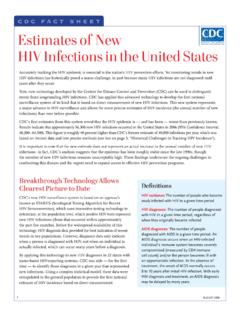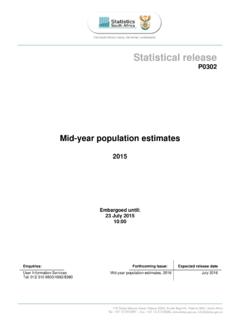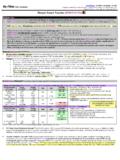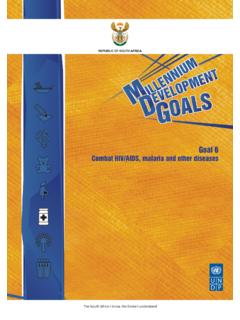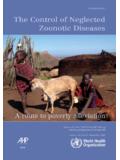Transcription of Syringe exchange programs around the world: The global …
1 Syringe exchange programs around the world: The global context Table of Contents Page I. Introduction and Overview .. 1 A. Injection Drug Use and the Development of SEPs .. 2 B. Current Trends: Drug Use, HIV Infections and SEPs .. 5 II. Analysis of Syringe exchange programs on a Region-by-Region Basis .. 7 A. Africa .. 7 1. North Africa and the Middle East .. 7 2. Sub-Saharan Africa .. 11 B. Asia .. 14 C. Australia and New 23 D. Europe .. 28 1. Eastern Europe .. 28 2.
2 Western 36 E. North America .. 41 1. 41 2. Mexico .. 44 F. South America .. 46 III. Policy Lessons from global SEPs .. 50 Acknowledgments We are grateful for the generous pro bono assistance of the law firm Davis Polk & Wardwell LLP, including counsel Rebecca Winters, associates Jesse Solomon, Jennifer Marcovitz and Hilary Dengel, and former summer associates Gregory Tuttle and Jonathan Stroble, in researching and authoring this report. All views contained in this report are those of Gay Men s Health Crisis and do not necessarily reflect the views of Davis Polk & Wardwell LLP.
3 Editing by Sean Cahill, PhD, and Nathan Schaefer, MSSA. October 2009 by Gay Men s Health Crisis. All rights reserved. Permission to copy, disseminate, or otherwise use this work is normally granted as long as ownership is properly attributed to Gay Men s Health Crisis. I. Introduction and Overview Injection drug use is a dangerously effective and increasingly prevalent means for spreading blood-borne viruses such as Human Immunodeficiency Virus (HIV); indeed, risky injection practices like needle sharing can easily result in transferring HIV directly from the bloodstream of one intravenous/injection drug user (IDU)
4 To that of Consequently, as injection drug use has become more widespread throughout the globe in the last three decades, needle sharing has become a significant factor in fueling the HIV/AIDS In the late 1980s and early 1990s, countries began implementing harm reduction programs to reduce the spread of HIV infections among One of the key elements of these programs was the development of needle exchange programs or Syringe exchange programs (SEPs) outlets where IDUs could safely dispose of used needles and obtain sterile injecting As of 2008, there were at least 77 countries worldwide that had introduced SEPs to curb the spread of As the Congress considers repealing the ban on using federal funds to support SEPs in the United States, this paper examines the global context for this effective HIV prevention technique.
5 Section I surveys global rates of injection drug use and HIV infection and discusses the development of SEPs as a mechanism to reduce HIV infections among IDUs. Section II contains a region-by-region analysis of SEP development, discusses the challenges that certain countries have faced in implementing effective SEPs and analyzes countries efforts to establish SEPs, formulating general recommendations on establishing an 1 INT L HARM REDUCTION ASS N, global STATE OF HARM REDUCTION 2008: MAPPING THE RESPONSE TO DRUG-RELATED HIV AND HEPATITIS C EPIDEMICS 12 (2008), [hereinafter IHRA, global STATE OF HARM REDUCTION 2008].
6 2 See id. at 10. 3 See discussion infra Sections (Asia) and (Australia and New Zealand). 4 While differences exist between these two types of programs , the term SEP will be used throughout this paper for internal consistency. 5 IHRA, global STATE OF HARM REDUCTION 2008, supra note 1, at 10, 15 (providing a chart identifying countries worldwide with SEPs). 2 effective system of Section III then discusses those recommendations, emphasizing the ways in which the United States may tailor a domestic SEP to best serve the IDU population by drawing on lessons learned from SEPs worldwide.
7 In particular, this paper highlights five policy lessons from the review of global SEPs: (1) SEPs are most often community-based programs supported by governmental funds and regulatory oversight, with this support and oversight playing a critical role in the success of any SEP; (2) governments should flexibly structure SEPs to meet national goals as well as the particular needs of domestic IDUs; (3) laws may be tailored to regulate and legalize SEPs, without legalizing drug use or possession; (4) social and religious mores disapproving of drug use do not preclude SEPs from operating effectively; and (5) SEPs can promote rehabilitation and actually reduce incidences of injection drug use.
8 A. Injection Drug Use and the Development of SEPs Prior to 1970, widespread injection of drugs, such as cocaine and heroin, took place primarily in North America and By 1992, however, injection drug use had spread to 80 countries and territories, and to 121 countries and territories by By 2008, researchers located 158 countries and territories worldwide with evidence of injection drug From the data available, researchers estimate that in 2008, there were million IDUs worldwide, down 6 This paper provides an overview of how global regions have implemented SEPs, and in so doing, it derives lessons that may be of use to the United States in implementing its own program.
9 Where scientific studies have been performed on SEP effectiveness, the paper attempts to document those studies, but it is by no means exhaustive. Because there are varying amounts and qualities of data demonstrating the effectiveness of SEPs, this paper does not aim to compare the effectiveness of individual country programs as a numerical matter. It should also be noted that this paper focuses squarely on SEPs and their effectiveness in preventing HIV infections. While SEPs have also been proven effective against the spread of other blood-borne diseases, this paper focuses on HIV, both because the spread of HIV has motivated the creation of SEPs generally and because less data exists on how effectively SEPs have curbed the spread of other blood-borne diseases.
10 Much as this paper focuses on HIV to the exclusion of other viruses, it also focuses on SEPs to the exclusion of other harm reduction measures, such as opioid substitution therapy or methadone maintenance treatment. 7 IHRA, global STATE OF HARM REDUCTION 2008, supra note 1, at 10. 8 Id. 9 Id. Another 2008 study estimated that there was evidence of injection drug use in 148 countries worldwide. Mathers et al., global Epidemiology of Injecting Drug Use and HIV among People who Inject Drugs: A Systematic Review, 372 THE LANCET 1733 at *4 (2008).

